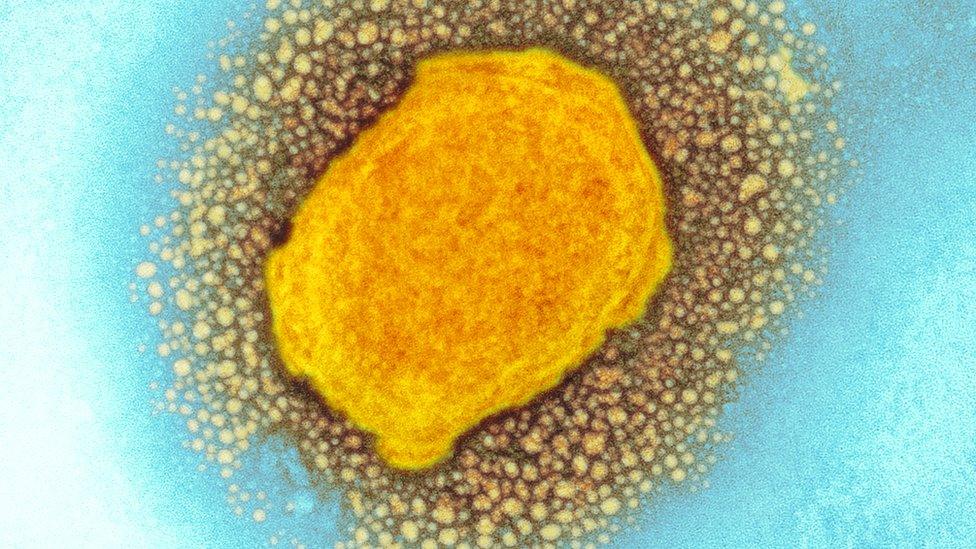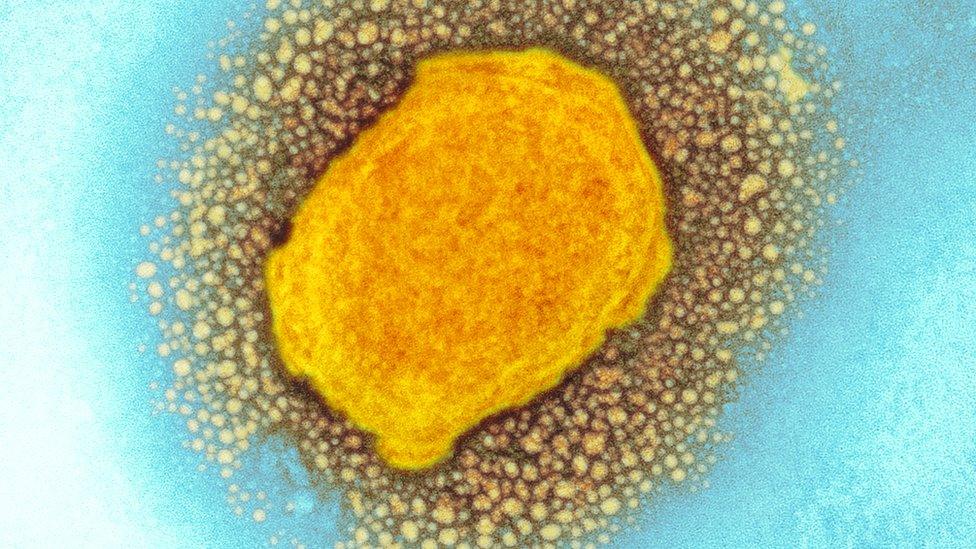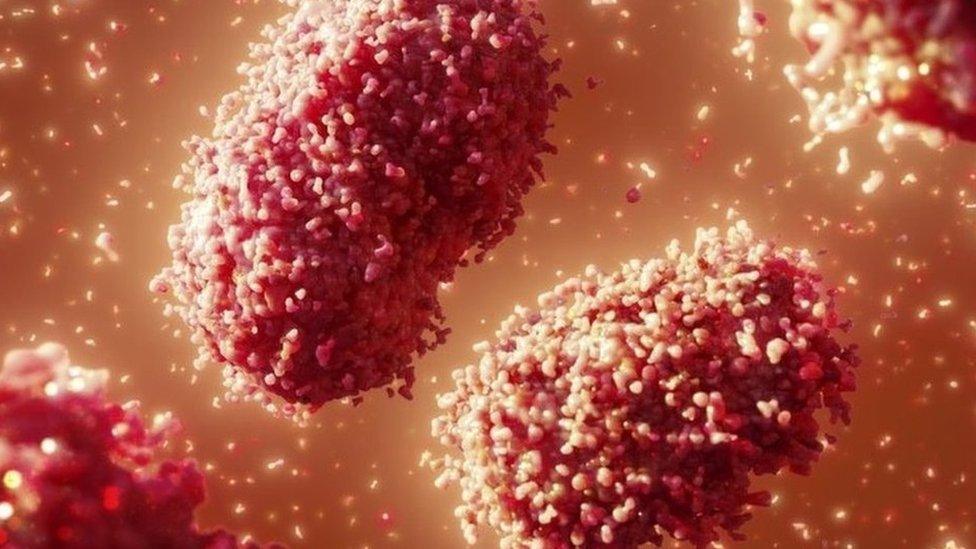Monkeypox contact tracing extended to Scotland
- Published

Public Health Scotland has confirmed it is helping to trace contacts of a monkeypox patient who was identified in England.
The patient had recently travelled to Nigeria, where they were believed to have caught the virus.
A "small number of individuals" in Scotland are now reported to be in quarantine, external after being identified as contacts of the patient.
The move was said to be a "standard and precautionary exercise".
And Public Health Scotland said the risk to the wider public remained very low.
Monkeypox is a rare viral infection which is usually mild and from which most people recover in a few weeks, according to the NHS.
The virus does not spread easily between people and the risk to the wider public is said to be very low.
Jonathan Ball, a professor of molecular virology at the University of Nottingham, told BBC Radio Scotland's Lunchtime Live programme it was very unusual for the virus to be present outside the animal world.
He said: "This is a virus that normally circulates in wildlife. We're not exactly sure what wildlife - it could be rodents, it could be monkeys.
"But occasionally when humans come into contact with an infected animal, you get human infections and sometimes you can get human-to-human infections."
The first-ever recorded occurrence of the virus in the UK was in 2018, and since then a handful of cases have been confirmed by health authorities.
The latest case was being treated at an expert infectious disease unit at Guy's and St Thomas' NHS trust in London after being identified last week.
Monkeypox: What are the symptoms and how do you catch it?

Monkeypox causes a rash, which can be extremely itchy, which changes and goes through different stages before finally forming a scab
Initial symptoms of monkeypox include fever, headache, muscle aches, backache, swollen lymph nodes, chills and exhaustion, the UKHSA said.
A rash can develop, often beginning on the face, then spreading to other parts of the body. The rash changes and goes through different stages before finally forming a scab, which later falls off.
It can be spread when someone is in close contact with an infected person. The virus can enter the body through broken skin, the respiratory tract or through the eyes, nose or mouth.
It can also be spread by contact with infected animals such as monkeys, rats and squirrels, or by virus-contaminated objects, such as bedding and clothing.
Read more about the virus here.
- Published7 May 2022

- Published5 August 2022
